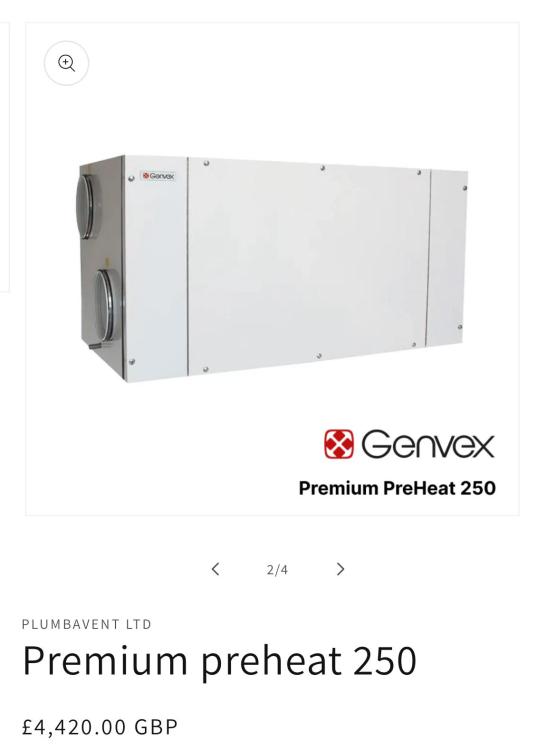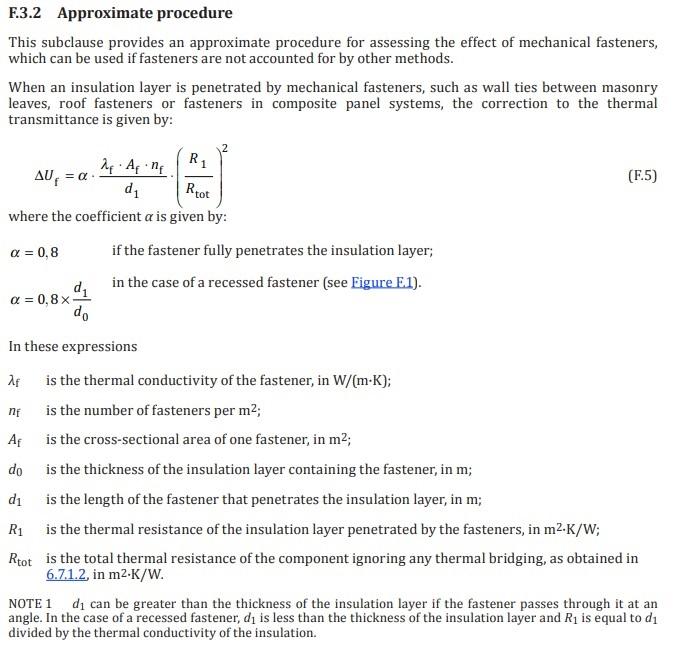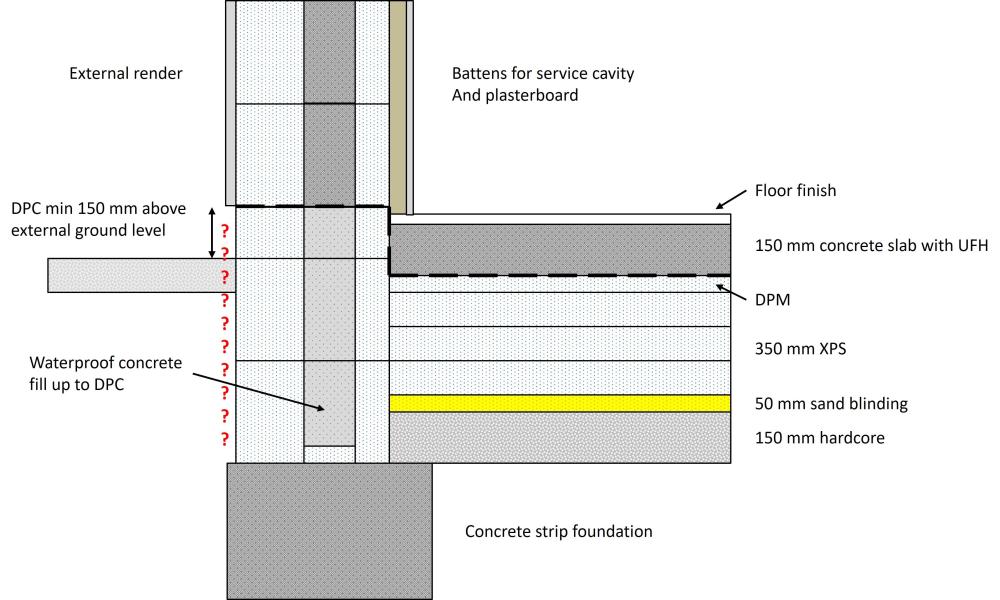
Joey
Members-
Posts
8 -
Joined
-
Last visited
Personal Information
-
Location
North West
Recent Profile Visitors
The recent visitors block is disabled and is not being shown to other users.
Joey's Achievements

New Member (2/5)
1
Reputation
-
Hi all, Recently had an application for change of conditions refused. This was for a change to the design that was approved before we bought the plot and we wanted to update to something more modern. One of the reasons stated was the updated design being ‘unduly overshadowing’ and ‘unduly overbearing’ to the neighbouring property, which we dispute as the footprints for the approved and newly proposed developments are essentially the same, and the updated design has a flat roof so was overall lower. The new design is also well within the 45 degree rule. Our architect has produced some new drawings comparing the two designs and will be taking these back to the planning department, however it would also be nice to have some additional objective evidence. As such, I’ve been look at having a sunlight/daylight assessment done to model the impact of any overshadowing on our neighbours. Couple of quotes so far of £800-900. Seems steep to me but I have seen a couple of threads on here with people being quoted £2,000+! Has anyone had one of these assessments done and would be willing to share what they paid and which company performed it? Thanks for your help! Joe
-
Polished concrete floor with underfloor heating. What are the steps?
Joey replied to flanagaj's topic in General Flooring
We want a similar floor finish on our project, but I haven’t got as far as contacting concrete flooring contractors yet so can’t help with the polished concrete per se, however have you considered alternatives such a microcement? As markc says, it depends what look you want specifically, but this might give you much more control over the finish and be logistically simpler? We’ve been quoted £8,000-9,000 for 80m2 from a local, relatively high end, contractor. Sure others could do it for less, but as I understand proper polished concrete is also very expensive. We’re definitely moving towards this over polished concrete, but I’ll be happy to pass on any information I get regarding the later when I get round to enquiring! -
Availability of combined A2A and A2W units in the UK
Joey replied to FelixtheHousecat's topic in Air Source Heat Pumps (ASHP)
Haven’t come across that site before! After having a quick browse, it seems the Total Home Environment system they quoted £25k for is just a modified version of this with a fancy cover and couple of extra features… Sure this doesn’t include the water tank and ductwork, but it’s £21k less! Schematics and performance look almost identical.- 36 replies
-
Availability of combined A2A and A2W units in the UK
Joey replied to FelixtheHousecat's topic in Air Source Heat Pumps (ASHP)
FWIW, I’ve recently looked into a couple of these from Total Home Environment after seeing them at the NSBRC. Our design isn’t passive, but it’s down at 15 W/m2 at -3 degrees, and they said a couple of options should work nicely. First option was their smallest capacity unit, HPV1, for ventilation and heating, and HPW which is a 300L cylinder with a heat pump for DHW… £25,000 with basic options and another £6,000 if we wanted it installed. Another option was a Pichler unit called the PKOM4, which I think was actually slightly less powerful, but cost more. They also still recommend we’d probably want some extra heating capacity for extract only rooms and incase it gets really cold. Shame, really liked the idea of the system. Not ruled out entirely, but we can basically get the same functionality from individual components for less.- 36 replies
-
Hi all, looking for some advice regarding the calculation of solar gain/overheating risk! I've seen a couple of threads by @Lilly_Pines and have taken a similar approach as they did with their solar gain calculator, using solar irradiance data from PVGIS and then calculating the amount of energy entering the house based on glazing area and G value etc. Our current design has a substantial amount of south (slightly south east) facing glazing, including a proposed 6m set of sliding doors spanning most of the length of the kitchen/diner. I want to get a grasp of the data and make sure sufficient shading is provided and any required alterations can be made whilst we're early in the project! Ideally I want to optimise the shading to limit overheating, but take advantage of as much solar gain during the colder months as possible. It would also be nice to incorporate things now to give us a good chance of passing the part O dynamic modelling. My questions are: Which data from PVGIS would be best to use for solar irradiance? The options are clear-sky irradiance, global, direct, and diffuse. Clear-sky is much higher than the others and, as this is apparently a calculated theoretical value based on, surprisingly, a completely clear sky, this is a large overestimation of what would be seen in real life. I've assumed global irradiance is the most suitable value so far, which seems to be the sum of direct and diffuse and then a little something extra for confusion. What level of detail would you say is sufficient to calculate overheating risk? Daily averages? Monthly? Hourly? When modelling heat loss and solar gain based on monthly/daily average irradiance and temperature data, I can apply shading solutions calculated with the tools from the sustainable by design website (https://www.susdesign.com/) and end up with figures showing the monthly/daily average solar gain is x% of the heating requirements for the same period. Where gains are less than the required heat input, this would suggest, on average, overheating risk is limited. However, when I download actual historical hourly data points from PVGIS and model how shading would have performed in say 2020 on a per hour basis, although the total daily gains might be less than the required heat input, at certain points during a given day the solar gain might exceed the heating requirement at that time point, sometimes significantly. I'm assuming if 4000 W of solar energy enters the house during an hour, but the heat requirement for the same period is only 2000 W, some of the additional energy will be absorbed by the mass of the building and released over time, not just all be dumped straight into the air and massively increasing the internal temperature? Basically, if I calculate the daily average solar gain to be lower than the average daily heat demand, is that enough? Or is the finer detail required? Might be overthinking things! Thanks for your help
-
Thermal loss through wall ties - is there a benefit to low conductivity ties?
Joey replied to Joey's topic in Heat Insulation
Thanks for the reply! I did actually look at DriTherm 32, and ubakus calculated this would take the U value from 0.13 to 0.11, and therefore heat loss from 520 W to 440 W under the above conditions. However, the extra cost for 32 vs 37 from the supplier I've mainly used for prices so far was about £3,000, so again I find it hard to justify the expense for a saving of about 23p/day under the above conditions. I appreciate your suggestion though as I do need to have a look at the different areas of the property and see where any extra investment would be best spent! Good point about the tie area. I just took the 16 mm2 cross section from the Vartry Engineering website as I'm having trouble finding other stainless steel ties with the required length. Likewise with the tie density, I assume this may also need to be increased due to the larger cavity. Hopefully I can get get answers on both of those points soon. Joe -
Dear all, My girlfriend and I are hoping to build ourselves a home after finally managing to secure a plot near Manchester, all very exciting! We'll be building primarily with brick and block and want to aim for passive house levels of performance. Current thinking is to have a 250 mm cavity fully filled with DriTherm 37, and a 100 mm thermal block inner leaf giving a U value of approximately 0.13. Based on an approximate wall area of 200 m2 excluding windows and doors, I think this gives 520 W of heat loss at a 20C temperature differential. I've been struggling to find many options in terms of walls ties to accommodate the wide cavity, but have obviously come across Teplo ties whilst taking inspiration from Green Building Store projects and other users on this site, and was initially taken with the ideal of using a low thermal transmittance product. Neutras ties also seem to be quite similar. The problem is, the costs I've currently seen for these ties at 375 mm are £4-6/tie! Assuming a tie density of 2.5/m2, that's £2,500! Using formulae given in ISO 6946 (see picture), I've calculated the following based on using stainless steel ties, not thermally efficient ones: Thermal conductivity of fastener = 17 W/m/K Cross sectional area of fastener = 16 mm2 or 0.000016 m2 Number of fasteners/m2 = 2.5 Thickness of bridged insulation layer = 0.25 m Thermal resistance of bridged insulation layer = 6.76 m2/K/W Thermal resistance of whole component = 7.69 m2/K/W 0.8 * 0.0027 * 0.77 = 0.0016 0.13 + 0.0016 = 0.1316 (corrected U value for the wall) Using the corrected U value and same conditions as above, I calculate the heat loss to now be... 526 W. Have I made an error I haven't spotted, or am I missing something? I'd appreciate your thoughts on this, because I've seen arguments both for and against using thermally efficient ties on here, but based on this I can't understand why someone would go to such additional expense for such a small saving? Also, if there really is limited benefit to using thermally efficient ties, can anyone recommend any stainless steel ties for a 250 mm cavity? I've seen Vartry Engineering recommend on here, but worry the lack of BBA certification might cause issues, or I might not be able to get them in the UK. Thanks for your time! Joe
-
Hi all, Currently in the early stages of planning an ICF build and I’m trying to get some specific detials clear in my head! I’m hoping for some advice on how you might best go about protecting a couple of courses of ICF blocks used partially below ground as part of the foundation - these are between the strip footing and DPC level. I’m specifically talking about the front face of the outer insulation. The outer face will be rendered above DPC level, but what should be done between this and ground level, and then below level? I’ve attached a basic detail to demonstrate what I mean, where the red question marks highlight the surface I’m referring too. These two and a half courses of blocks are filled with waterproof concrete as recommended in some manufacturers detials, however the specifications for the front of the blocks generally just say something like ‘render to appropriate depth below ground level’, or something like that. Maybe I’m just over thinking things, but wouldn’t a render applied continuously down the wall to below ground level physically bridge any DPC and provide a route for moisture to do the same, or is the render waterproof enough for this not to be an issue? Would it be possible to simply just treat the face of these courses of blocks with a water-based waterproofing agent, or would this be damaged by contact with the ground? Would really appreciate any advice or experience! Joe




